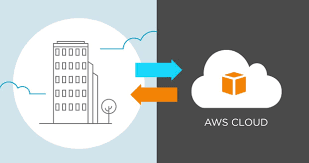When planning a migration from an on-premise environment to AWS Cloud, several key criteria must be considered to ensure a smooth, efficient, and successful transition. Here are the primary factors to consider:
Migration Readiness Assessment:
Evaluate your organization's readiness for cloud migration. This includes technical, business, and operational aspects.
Cost Analysis:
Perform a detailed cost-benefit analysis. Compare on-premise costs (including hardware, maintenance, and facilities) to the projected costs on AWS.
Consider long-term costs like storage, data transfer, and AWS service pricing.
Security and Compliance:
Assess security requirements and ensure AWS services meet your security and compliance needs.
Understand AWS shared responsibility model for security.
Ensure compliance with industry regulations (like GDPR, HIPAA, etc.) in the cloud.
Data Migration Strategy:
Plan data migration carefully, considering the volume of data and acceptable downtime.
Use tools like AWS DataSync, AWS Database Migration Service, or AWS Snowball for large data transfers.
Application Assessment and Dependency Mapping:
Evaluate applications for cloud suitability, dependencies, and necessary modifications.
Decide on migration strategies for each application (rehost, refactor, re-platform, retire, retain).
Network and Connectivity:
Plan for network architecture changes, including VPN connections, Direct Connect, and internal networking on AWS.
Assess bandwidth requirements and latency implications.
Performance and Scalability:
Ensure that AWS resources meet or exceed on-premise performance.
Plan for scalability to handle future growth and peak loads.
Disaster Recovery and High Availability:
Design for high availability using AWS's global infrastructure.
Implement a disaster recovery strategy that meets your business continuity requirements.
Operational Readiness:
Prepare your IT staff with the necessary training and skills for managing AWS services.
Set up operational processes like monitoring, logging, alerting, and incident response with AWS tools.
Change Management:
Manage the organizational change aspect, including aligning stakeholders and communicating plans and benefits.
Vendor Lock-in Considerations:
Understand the implications of cloud vendor lock-in and plan for potential future needs to migrate or integrate with other clouds or services.
Testing and Validation:
Thoroughly test applications and infrastructure in the cloud environment before going live.
Conduct performance testing, security testing, and disaster recovery drills.
**
 **
**
Continuously monitor and optimize costs, performance, and security after the migration.
Leverage AWS services and tools for cost optimization, like AWS Trusted Advisor and Cost Explorer.
Project Management and Governance:
Ensure strong project management to oversee the migration process.
Establish clear governance and policies for cloud usage and management.



Top comments (0)